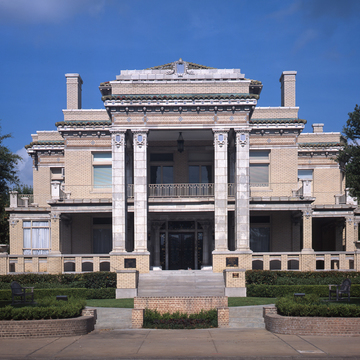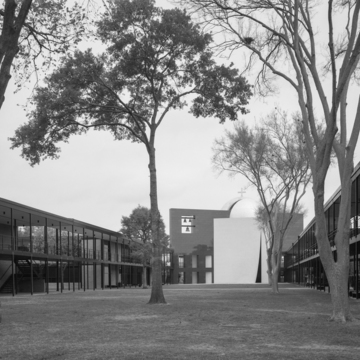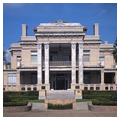Philip Johnson designed the first multibuilding group of his career for the University of St. Thomas, a Roman Catholic university administered by the Congregation of St. Basil. Franco-American art collectors Dominique Schlumberger and John de Menil were responsible for securing this commission for Johnson in 1956. Johnson drew on the architectural practices that Ludwig Mies van der Rohe had used in designing the campus buildings of the Illinois Institute of Technology (IIT) in Chicago in the 1940s. The small scale and straightforward detailing of Johnson's exposed-steel-framed buildings, with their infill panels of rose-colored St. Joe brick and steel-framed windows, and their flat roofs, make the three original buildings (Strake, Jones, and Welder halls) less intense than Mies's buildings at IIT.
Johnson completed the campus, forty years after its initial design, with his theatrically deconstructivist Chapel of St. Basil of 1997 at the north end of the academic mall. It is marked by a gold dome cleft in two by a black, granite-faced wing wall.






















